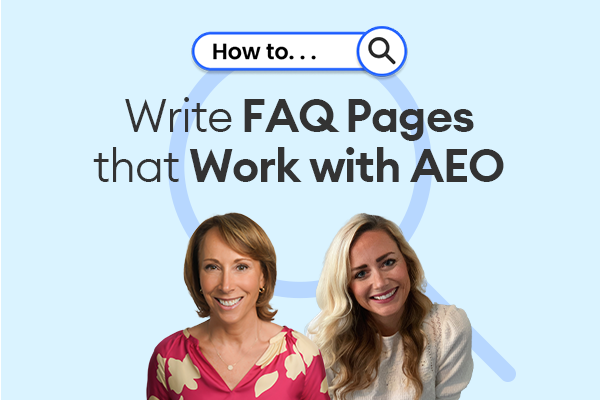Hey there, content creators, small business owners, and anyone looking to make their mark online! I’m Noah Evans, and at AskByteWise, our mission is to make complex tech simple. Today, we’re diving deep into a topic that’s becoming increasingly vital for online visibility: how to write content for AEO – or Answer Engine Optimization. Forget just ranking #1 on Google; we’re talking about getting your answers directly displayed when users ask questions. If you’ve ever wondered how your content can appear in those coveted “Featured Snippets,” “People Also Ask” boxes, or even in Google’s new Search Generative Experience (SGE), you’re in the right place. This guide will break down the strategies, step-by-step, into an easy-to-follow process, ensuring your content not only answers questions brilliantly but also satisfies search engines’ hunger for clear, concise, and trustworthy information.
What You’ll Need (The Toolkit for AEO Success)
Before we jump into the “how,” let’s clarify what you’ll need in your arsenal to conquer Answer Engine Optimization. It’s less about expensive software and more about a strategic mindset:
- A Curious Mindset: Think like your audience. What questions are they genuinely asking?
- Empathy: Understand their pain points, confusion, and what kind of answer would truly help them.
- Basic Keyword Research Skills: Beyond just volume, you’ll need to dig for question-based keywords and phrases.
- Clarity and Conciseness: The ability to distill complex information into bite-sized, digestible answers.
- A Commitment to Quality: Answer Engines prioritize expertise, authoritativeness, and trustworthiness (E-E-A-T). Your content needs to reflect that.
- Patience: AEO, like traditional SEO, is a long-term game. Results won’t appear overnight.
A Step-by-Step Guide to Writing AEO Content
Writing for Answer Engines isn’t just about throwing keywords onto a page; it’s about fundamentally shifting your content creation approach to prioritize direct answers and user intent. Let’s walk through it.
Step 1: Understand the “Why” Behind Answer Engines
Imagine you’re trying to find out “how to tie a Windsor knot.” Would you rather scroll through ten paragraphs of a sartorial history lesson, or get a direct, step-by-step instruction right at the top of the search results? That’s the core idea behind Answer Engines. They are designed to deliver immediate, precise answers to user queries, reducing the need for extensive clicking and browsing.
Think of it this way: traditional search engines were like a vast library – they pointed you to where the book might be. Answer engines are more like having a brilliant personal assistant who finds the exact page, reads the relevant passage, and tells you the answer directly. Your job is to become that trustworthy personal assistant for your audience. This means moving beyond just informing to directly answering.
Step 2: Uncover Your Audience’s Questions (AEO Keyword Research)
This step is crucial. Traditional keyword research often focuses on broad terms and high search volume. For AEO, we zero in on question-based queries and topics that lend themselves to direct, definitive answers.
Here’s your detective toolkit:
- Google’s “People Also Ask” (PAA) Boxes: This is pure gold. When you search for a topic, Google often shows a “People Also Ask” section. These are actual questions real users are asking. Each question you click on usually expands to show more related questions. This is a direct insight into user intent.
- “Related Searches” at the bottom of Google results: These often highlight follow-up questions or related problems users are trying to solve.
- Google Autocomplete: As you type a query, Google suggests common completions. Pay attention to those that are questions.
- Question-Focused Keyword Tools:
- AlsoAsked.com: This tool visualizes the “People Also Ask” questions, showing you how different questions relate and branch out. It’s fantastic for understanding the full scope of a user’s potential queries around a topic.
- Ahrefs, SEMrush, Moz Keyword Explorer: While general SEO tools, their keyword research features allow you to filter for question-based keywords. Look for terms starting with “how,” “what,” “where,” “when,” “why,” and “is.”
- AnswerThePublic: This tool generates a spider diagram of questions people are asking around your core topic.
- Forums, Social Media, Customer Support Logs: Where do your target audience members gather to ask questions? What common issues do they raise? This direct feedback is invaluable.
Analogy: Instead of casting a wide net for fish (traditional SEO), you’re now using a spear to target specific, meaty questions (AEO). Each question is an opportunity to provide the definitive answer.
Step 3: Craft the “Direct Answer” (The AEO Sweet Spot)
Once you’ve identified a target question, the next step is to formulate the most direct, concise, and accurate answer possible. This is where you create the content most likely to be pulled into a Featured Snippet.
- Front-Load Your Answer: Place the complete, concise answer to the question immediately after the heading or within the first paragraph.
- Example: If your H2 is “## What is Answer Engine Optimization?”, your very first sentence should be the definition: “Answer Engine Optimization (AEO) is the process of creating content specifically designed to answer user questions directly and appear in search engine features like Featured Snippets, People Also Ask boxes, and Search Generative Experience (SGE) results.”
- Aim for Brevity: Featured Snippets are typically short.
- Definitions: Often 40-60 words.
- Paragraphs: Around 50-100 words.
- Lists: Around 4-8 items.
- Use Clear, Unambiguous Language: Avoid jargon where possible, or explain it immediately.
- Format for Snippets:
- Paragraph Snippets: Answer the question clearly in a single, tight paragraph (50-100 words).
- List Snippets: If you’re explaining a “how-to” or a series of steps, use numbered lists. If it’s a collection of items or benefits, use bullet points. Ensure the list items are concise.
- Table Snippets: If you’re comparing data, prices, or specifications, a clean HTML table is ideal.
Noah’s Pro Tip: Think of your direct answer as the headline news. It’s the most important information, presented first. The rest of your article then provides the supporting details, background, and further analysis.
Step 4: Provide Context and Detail (E-E-A-T & Value Beyond the Snippet)
While the direct answer is crucial for AEO, it’s not the entire article. After your concise answer, you need to expand, explain, and elaborate to demonstrate your expertise and provide comprehensive value to the user. This is where you build out the rest of your content, satisfying not just the initial query but also potential follow-up questions.
- Expand on the “Why” and “How”: If you defined a concept, explain its importance, benefits, or implications. If you provided steps, elaborate on each step with examples or additional tips.
- Use Analogies and Real-World Examples: This is where AskByteWise excels! Analogies help make complex concepts relatable. For instance, when explaining AEO, I’ve used the “library vs. personal assistant” analogy. When discussing keyword research, I used the “wide net vs. spear fishing” analogy.
- Address Related Questions: Your “People Also Ask” research from Step 2 comes into play here. After answering the primary question, use subheadings to tackle closely related queries within the same article. This shows comprehensive coverage and increases your chances of capturing multiple snippets.
- Data and Evidence: Back up your claims with statistics, studies, or expert opinions. This significantly boosts your E-E-A-T.
- User Scenarios: Show readers how this information applies to their specific situations. For small business owners, how can AEO help their local business? For students, how does it apply to a research project?
Step 5: Structure for Scannability and Clarity (User Experience & AEO)
Answer Engines love well-structured content because it makes it easier to extract information. Users love it because it’s easy to read and digest. It’s a win-win.
- Logical Headings and Subheadings (H1, H2, H3): Use them to break your article into digestible sections. Each heading should clearly indicate the content below it.
- Your H1 is the article title.
- H2s introduce main sections.
- H3s break down H2s into specific topics or steps.
- Short Paragraphs: Break up large blocks of text. Aim for paragraphs of 3-5 sentences maximum.
- Bullet Points and Numbered Lists: Use these generously for listing benefits, features, steps, or components. They are highly scannable and frequently pulled into list-based snippets.
- Bold Important Terms: Highlight key phrases and concepts to draw the reader’s eye and help search engines understand core topics.
- Whitespace: Don’t be afraid of empty space! It improves readability and reduces cognitive load.
- Internal Linking: Link to other relevant articles on your site. This helps search engines understand the breadth of your expertise and guides users to more helpful content. For instance, to dive deeper into the overarching strategy, check out our comprehensive guide on Answer Engine Optimization (AEO). (Note: Replace with actual pillar page URL)
Step 6: Optimize for Language and Tone (Readability & Trust)
Your writing style is an E-E-A-T signal. Simple, clear, and friendly language builds trust and makes your content accessible.
- Use Simple English: Avoid overly academic or complex vocabulary. If you must use jargon, explain it immediately. Imagine you’re explaining this to a smart 10-year-old.
- Active Voice: Generally, active voice is clearer and more direct than passive voice (“The search engine displays results” vs. “Results are displayed by the search engine”).
- Conversational Tone: Write as if you’re having a friendly chat with your reader. This aligns perfectly with AskByteWise’s brand voice. Use contractions (e.g., “it’s,” “you’ll”).
- Proofread Meticulously: Typos and grammatical errors erode trustworthiness. Use tools like Grammarly, but also read your content aloud to catch awkward phrasing.
Step 7: Build Authority and Trust (E-E-A-T in Action)
Google’s E-E-A-T guidelines are crucial for AEO. Your content needs to demonstrate genuine experience, expertise, authoritativeness, and trustworthiness.
- Author Bio: Ensure your articles feature a credible author bio. Highlight relevant experience, certifications, or roles (like mine as Lead Content Strategist at AskByteWise).
- Citations and Sources: If you’re quoting statistics, research, or expert opinions, link to the original source. This is a powerful trust signal.
- Internal Links: Link to other authoritative pages on your own site. This demonstrates comprehensive coverage and expertise across related topics.
- External Links: Don’t be afraid to link to other highly authoritative, non-competing sources. It shows you’ve done your research and are committed to providing the best information.
- Regular Updates: Keep your content fresh and accurate. Outdated information can quickly diminish trust.
Step 8: Regularly Update and Refine (Staying Relevant)
AEO isn’t a “set it and forget it” strategy. Search results and user intent evolve.
- Monitor Performance: Keep an eye on your Google Search Console data. Which pages are getting impressions for question-based queries? Are you appearing in snippets?
- Refresh Outdated Content: If facts change, statistics are updated, or processes evolve, go back and revise your articles. Add new insights.
- Expand Existing Content: As new “People Also Ask” questions emerge around your topic, consider expanding existing articles to cover these.
- Test and Learn: Experiment with different ways of phrasing your direct answers. See what resonates best with both users and answer engines.
Common Mistakes to Avoid When Writing for AEO
Even with the best intentions, it’s easy to stumble. Here are some pitfalls to steer clear of:
- Ignoring User Intent: Don’t just answer a question; answer the specific question your audience is asking. If they ask “how to tie a tie,” they don’t want a history of neckwear.
- Keyword Stuffing: Trying to cram your target keyword into every sentence will hurt your readability and signal low quality to search engines. Natural language is key.
- Lack of a Direct Answer: If your answer is buried deep within paragraphs of introductory text, answer engines will struggle to pull it out. Front-load!
- Poor Readability: Long paragraphs, complex sentences, and a lack of headings or lists will drive users away and make it harder for search engines to process your content.
- Forgetting E-E-A-T: Don’t make claims without backing them up. Ensure your content is credible and accurate.
- Writing Only for Snippets: While snippets are the goal, remember your article still needs to provide comprehensive value beyond that initial answer. A snippet is a doorway; your content is the welcoming home.
- Not Structuring for Different Snippet Types: Don’t just write paragraphs. Think about how your content could be displayed as a list or a table and format accordingly.
Summary & Key Takeaways
Writing content for Answer Engine Optimization is about putting your audience’s questions first and providing the most direct, clear, and comprehensive answers possible. Here’s the recap:
- Shift Your Mindset: Move from informing to directly answering specific user questions.
- Research Questions: Use PAA, related searches, and question-focused tools to uncover what your audience truly wants to know.
- Front-Load Your Answers: Provide the concise, definitive answer immediately.
- Expand Thoughtfully: Follow up with context, examples, and details to provide complete value and demonstrate expertise.
- Prioritize Structure: Use headings, lists, and short paragraphs for optimal scannability and snippet potential.
- Write Clearly and Concisely: Simple, friendly language builds trust and improves readability.
- Build E-E-A-T: Prove your experience, expertise, authority, and trustworthiness through credible content and citations.
- Stay Agile: Regularly update and refine your AEO content to stay relevant.
By following these steps, you’ll not only enhance your chances of appearing in those coveted answer engine features but also create genuinely helpful content that your audience will love. And that, after all, is the ultimate goal of AskByteWise!
Frequently Asked Questions (FAQ)
Q1: What’s the main difference between AEO and traditional SEO?
A: Traditional SEO often focuses on ranking highly for keywords, which usually means driving traffic to your site. AEO, on the other hand, specifically targets appearing directly within the search results page itself (like Featured Snippets, PAA, SGE) by providing direct answers to user questions. While they overlap, AEO prioritizes a specific type of on-SERP visibility and direct answer delivery.
Q2: How long does it take for AEO content to rank or appear in snippets?
A: There’s no fixed timeline. It can range from a few weeks to several months. Factors include your website’s overall authority, the competitiveness of the query, and how well your content directly answers the question. Consistent application of AEO strategies and regular content updates can accelerate the process.
Q3: Can I optimize old content for AEO?
A: Absolutely, and in many cases, it’s highly recommended! Review your existing content for opportunities to add direct answers, improve readability, update information, and restructure with clear headings and lists. Identify articles that already rank well for question-based queries and refine them for AEO.
Q4: Do I need special tools for AEO content creation?
A: While advanced SEO tools (like Ahrefs, SEMrush) can certainly help with detailed question-based keyword research, you can start with free tools like Google’s “People Also Ask” feature, Google Autocomplete, and AlsoAsked.com. The most important “tools” are your understanding of user intent and your ability to write clear, concise answers.
See more: how to write content for aeo.
Discover: AskByteWise.


